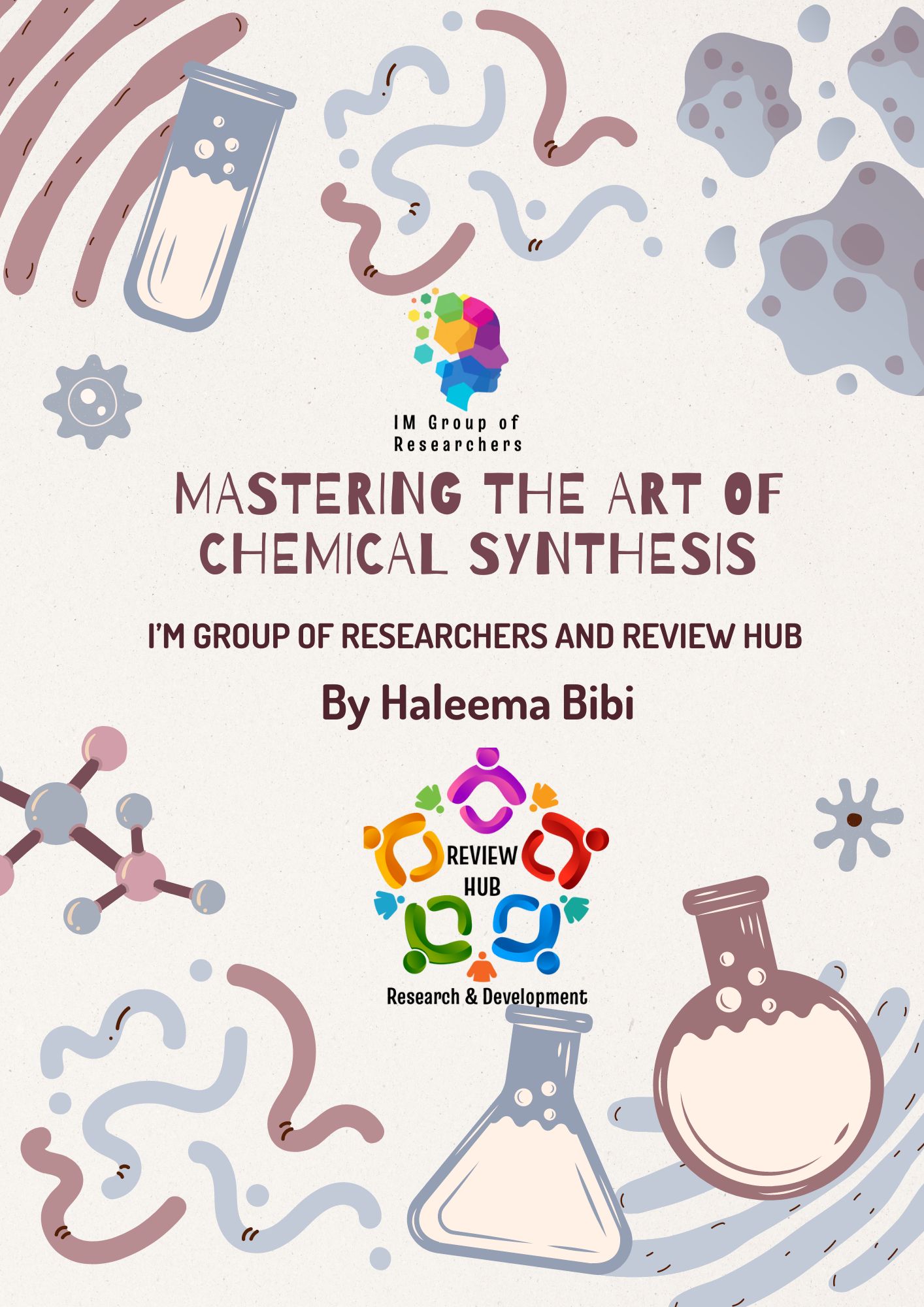Author: Haleema Bibi
Introduction: Chemistry’s Alchemy
Discover the fascinating realm of chemical synthesis, the process by which molecules are produced, altered, and given life.
Chemical Synthesis Definition: Creating Molecular Magic
The procedure of creating new compounds from simpler ones is recognized as chemical synthesis. It is required for the engineering of materials, medications, and excess of other products.
Importance in Science and Industry: The Catalyst for Progress
The basis for scientific and industrial innovations that change the world is the synthesis of new materials, drugs, and technology through chemical processes.
Classification of Chemical Synthesis: Building Blocks and Beyond
Chemical synthesis can be roughly divided into II categories: inorganic and organic. Each category includes a variety of techniques designed to address certain molecular applications and complexities.
1.Organic Synthesis: Crafting Carbon Masterpieces
The process of producing complex structures that are necessary for polymers, medications, and other organic substances involves the synthesis of carbon-based molecules, a process known as organic synthesis.
2. Inorganic Synthesis: Beyond Carbon Compounds
Inorganic synthesis drives beyond carbon and incorporates the synthesis of non-carbon-based constituents like metals, minerals, and ceramics that are used in materials examination and industry.
Laboratory Techniques: Tools of the Trade for Chemical Synthesis
Chemists use a wide range of laboratory research procedures, including as chromatography, crystallization, and distillation, to separate and purify produced materials.
Traditional Methods: The Time-Tested Approaches
Chemical synthesis was once accomplished by conventional procedures including heating, mixing, and refluxing, which paved the way for the creation of modern synthetic techniques.
Solvent-Based Synthesis: Dissolving Barriers
In chemical synthesis, solvents are essential because they dissolve and assist reactions. The choice of solvents affects reaction speeds, yields, and environmental factors.
Fixing Molecules in Solid-Phase Synthesis
The synthesis of oligonucleotides, peptides, and other chemicals smoothened by solid-phase synthesis in which molecules are attached to a solid support.
Liquid-Phase Synthesis: Crafting in Solution
Conversely, liquid-phase synthesis takes place in solution, allowing for efficient mixing and reaction progression, particularly in the synthesis of organic compounds.
Microwave-Assisted Synthesis: Speeding up Reactions
Microwave irradiation accelerates reactions by promoting efficient energy transfer, reducing reaction times in various synthesis, from organic molecules to nanomaterials.
Green Chemistry: Sustainable Synthesis Practices
Embracing green chemistry principles minimizes environmental impact, advocating for safer solvents, reduced waste, and energy-efficient processes in chemical synthesis.
Flow Chemistry: Continuous Creation
In flow harmony, reactants are endlessly pushed through a reaction scheme, providing assistances for a variety of synthetic applications in terms of protection, scalability, and control.
Merging Biology and Chemistry: Bioconjugation
Biomolecule amalgams, vital for medicine, bioengineering and diagnostics, are formed by the method of bioconjugation, which blends the biological and chemical domains.
Click Chemistry: Joining with Precision for Chemical Synthesis
High-yielding, selective reactions known as “click chemistry” are employed to create complex compounds, offering an effective and modular method for organic synthesis.
Solid-State Synthesis: Beyond Liquid Solutions
Solid-state synthesis occurs in the absence of solvents, often through grinding or heating, with applications in materials science and the creation of pharmaceutical polymorphs.
Synthesis of Polymers: Connecting Molecules
Macromolecules are formed during the polymer synthesis method, which is required to produce plastics, rubber, and cultured materials with precise qualities.
Supramolecular Chemistry: Non-Covalent Interactions
In order to produce bigger, more intricate structures basically open the door to the progress of novel materials and applications for supramolecular chemistry and nanotechnology explores non-covalent interactions.
Photochemical Synthesis: Harnessing Light Energy
By using light energy to catalyze chemical reactions, photochemical synthesis produces molecules with a wide range of applications while maintaining exact control and selectivity.
Electrochemical Synthesis: Energizing Reactions
Utilizing electrical energy to trigger chemical changes, electrochemical synthesis provides effective and sustainable pathways for a range of synthetic uses.
Multicomponent Reactions: One-Pot Wonders
By combining many reactants into a single reaction vessel, multicomponent reactions simplify synthesis and provide a variety of routes to complex compounds.
Unbalanced Reproduction: Creating Chirality
Since many compounds in biology are chiral, asymmetric synthesis aims to create molecules with specific handedness, which is crucial for medicine development.
Peptide Synthesis: The Fundamental Units of Living
Basically merging of amino acids to form proteins and peptides, is an innovation in biotechnology, biochemistry, and medicine which is called peptide synthesis.
Metathesis Reactions: Shuffling Bonds
Metathesis events involve double bond rearrangements that are helpful in the production of complex materials, medications, and natural substances. Metathesis events involve double bond rearrangements that are helpful in the production of complex materials, medications, and natural substances.
Nanoparticle Synthesis: The Smallest Constructs
By producing customized nanomaterials, nanoparticle synthesis produces minuscule structures with distinct characteristics that transform industries like electronics, medicine, and catalysis.
Redefining Synthesis in Synthetic Biology
By fusing biology and engineering, synthetic biology creates new living entities that provide inventive medical, energy, and material solutions.
Overcoming Obstacles in Chemical Synthesis
Despite advancements, challenges persist, such as achieving selectivity, scalability, and sustainability, driving ongoing research to refine synthetic methods.
Future Directions: The Evolution of Chemical Synthesis
Anticipating future trends, the evolution of chemical synthesis involves interdisciplinary collaboration, automation, and the integration of advanced technologies for precision and efficiency.
Conclusion: The Ever-Expanding Horizon of Chemical Synthesis
In conclusion, chemical synthesis is an intricate tapestry of methods, each thread weaving together the molecules that shape our world. As technology advances and understanding deepens, the potential for synthesis to drive scientific and industrial progress remains boundless.
Also read: Comparison of Conventional Verses Green Synthesis of Nanoparticles
Follow Us on

